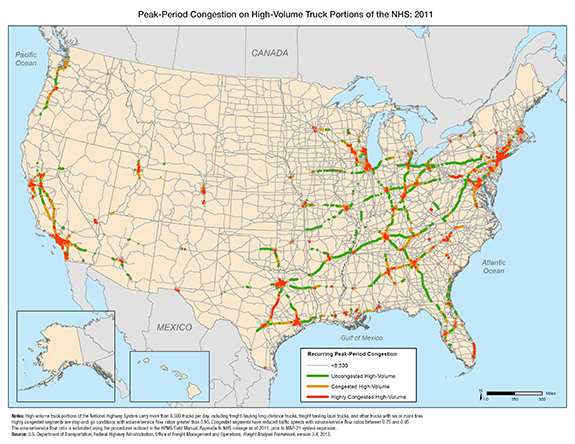Freight Facts and Figures 2013
Figure 3-18. Peak-Period Congestion on High-Volume Truck Portions of the National Highway System: 2011
Congested highways carrying a large number of trucks substantially impede interstate commerce, and trucks on those segments contribute significantly to congestion. Recurring congestion slows traffic on 5,800 miles and creates stop-and-go conditions on 4,500 miles of the NHS that carry more than 8,500 trucks per day.
Figure 3-18

Notes:
High-volume truck portions of the National Highway System carry more than 8,500 trucks per day, including freight-hauling long-distance trucks, freight hauling local trucks, and other trucks with six or more tires. Highly congested segments are stop-and-go conditions with volume/service flow ratios greater than 0.95. Congested segments have reduced traffic speeds with volume/service flow ratios between 0.75 and 0.95. The volume/service flow ratio is estimated using the procedures outlined in the HPMS Field Manual, Appendix N. NHS mileage as of 2011, prior to MAP-21 system expansion.
Sources:
U.S. Department of Transportation, Federal Highway Administration, Office of Highway Policy Information, Highway Performance Monitoring System; and Office of Freight Management and Operations, Freight Analysis Framework, version 3.4, 2013.
You may need the Adobe® Reader® to view the PDFs on this page.